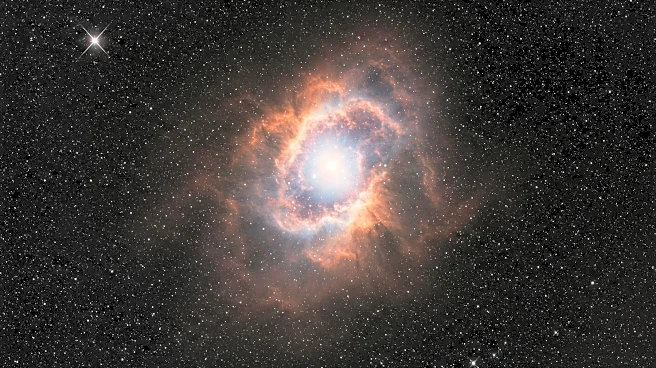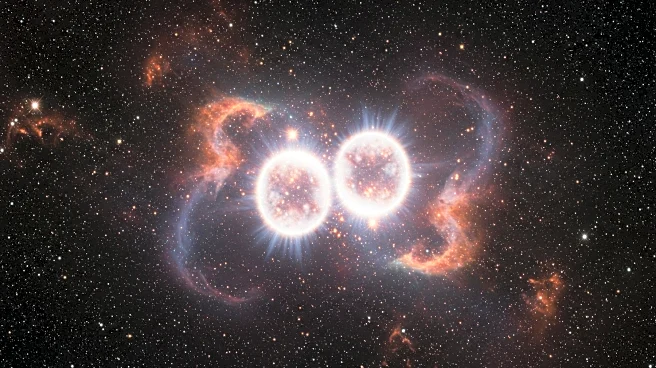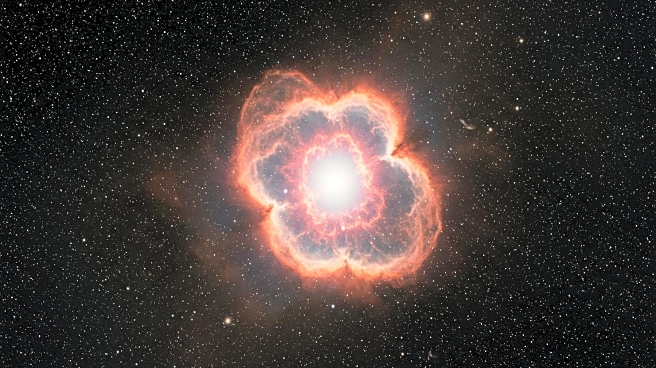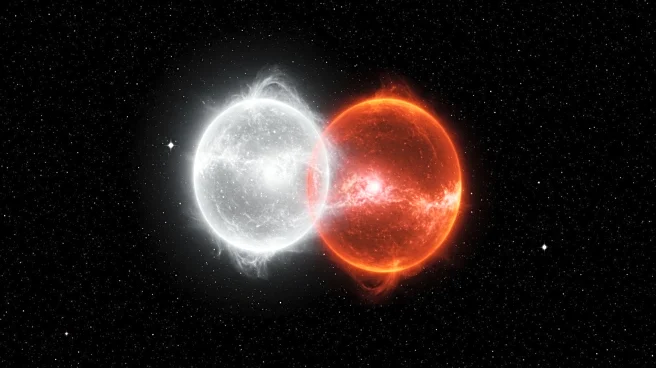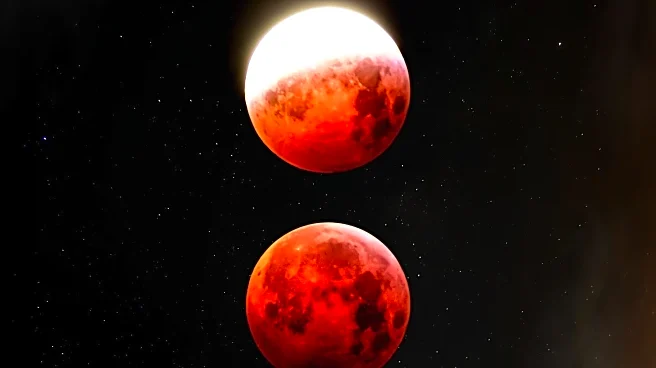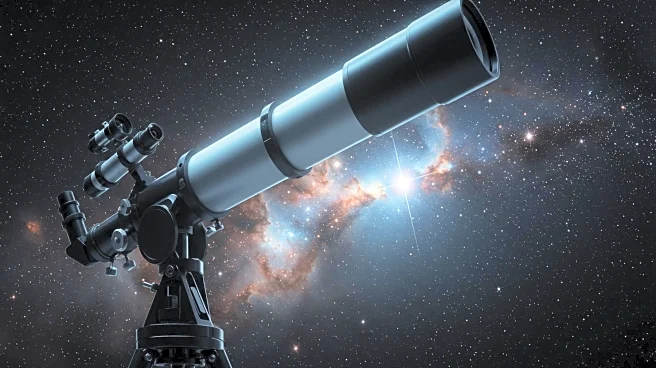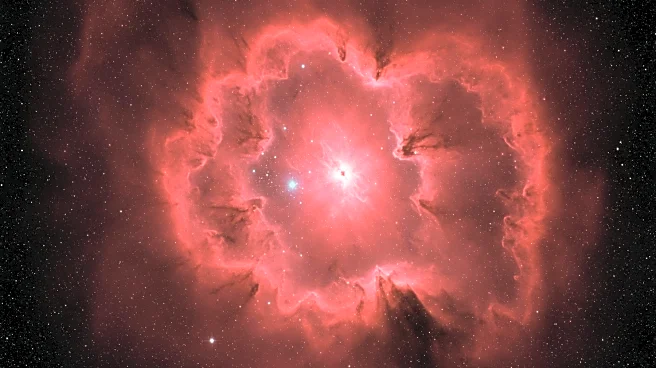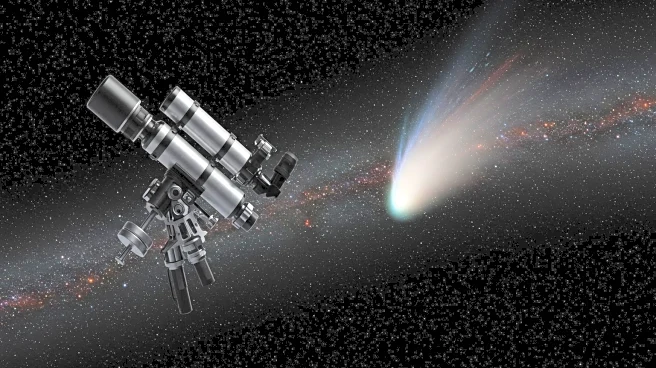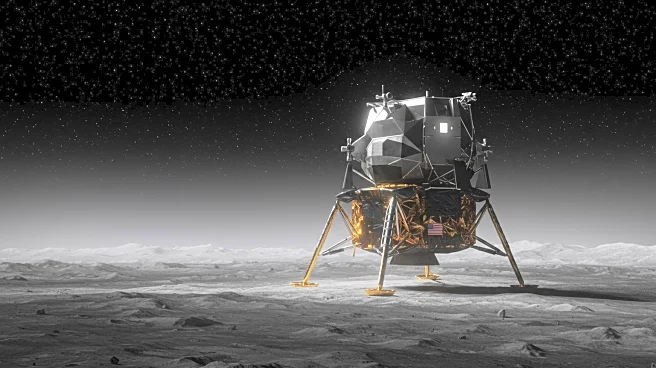What is the story about?
What's Happening?
Astronomers using the NASA/ESA Hubble Space Telescope have discovered an ultra-massive white dwarf, WD 0525+526, formed from the merger of two stars. This discovery was made possible by Hubble's ultraviolet observations, which revealed carbon in the white dwarf's atmosphere, indicating a violent origin. Typically, white dwarfs form from the evolution of a single star, but this finding suggests that mergers may be more common than previously thought. WD 0525+526, located 128 light-years away, is 20% more massive than the Sun and has a temperature of nearly 21,000 kelvins. The presence of carbon in its atmosphere, detected through ultraviolet spectroscopy, marks the first time a white dwarf merger remnant has been identified by this method.
Why It's Important?
The discovery of WD 0525+526 challenges existing theories about white dwarf formation and suggests that stellar mergers may play a significant role in the creation of these celestial bodies. This has implications for understanding the lifecycle of stars and the conditions leading to supernova explosions. The ability to detect merger remnants through ultraviolet spectroscopy opens new avenues for research, potentially revealing more white dwarfs with similar origins. This could enhance our understanding of stellar evolution and the dynamics of binary star systems, contributing to the broader field of astrophysics.
What's Next?
The research team plans to extend their study to explore the prevalence of carbon white dwarfs and the frequency of stellar mergers among the white dwarf population. This could provide valuable insights into the pathways leading to supernova explosions and the formation of white dwarf binaries. The findings may also influence future observational strategies, focusing on ultraviolet spectroscopy to uncover hidden merger remnants. Continued research in this area could significantly advance our knowledge of stellar evolution and the complex interactions within binary star systems.
AI Generated Content
Do you find this article useful?
